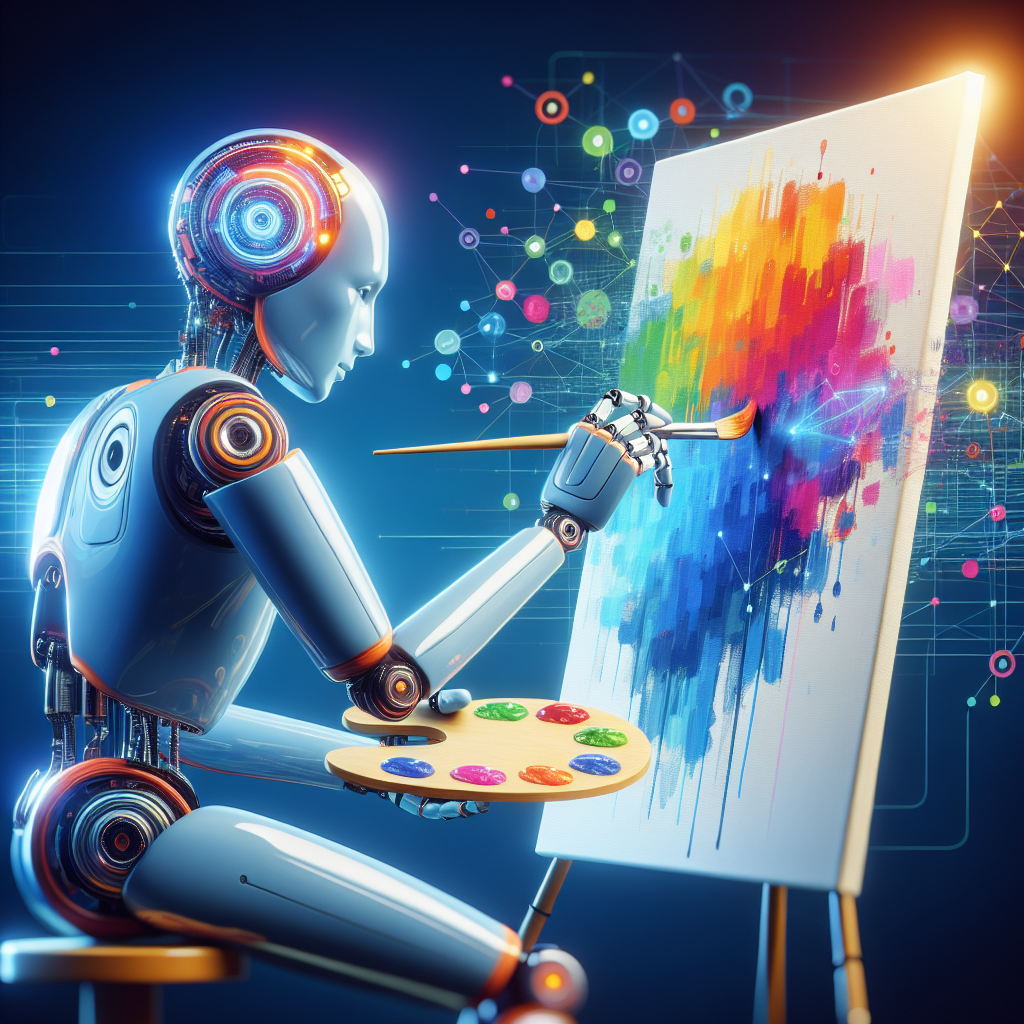AI and Creativity: Breaking New Grounds
Artificial Intelligence (AI) has made significant advancements in recent years, revolutionizing various industries such as healthcare, finance, and transportation. However, one area where AI has been making particularly impressive strides is in the realm of creativity. Traditionally, creativity has been seen as a uniquely human trait, but AI is challenging that notion by generating original and innovative works of art, music, and literature.
AI-powered tools are now being used by artists, musicians, writers, and designers to enhance their creative process and push the boundaries of what is possible. These tools can analyze vast amounts of data, recognize patterns, and generate new ideas that humans may not have thought of on their own. This collaboration between humans and machines is ushering in a new era of creativity, where the possibilities are endless.
One of the most well-known examples of AI in creativity is Google’s Magenta project, which is exploring the intersection of machine learning and art. Magenta has developed AI algorithms that can generate music, create visual art, and even write poetry. These algorithms are trained on vast datasets of existing works and can produce new creations that are indistinguishable from human-made art.
Another example of AI in creativity is IBM’s Watson, which has been used to create a cookbook called “Cognitive Cooking with Chef Watson.” This cookbook features recipes that were developed by AI algorithms, combining unexpected ingredients and flavors to create unique dishes that push the boundaries of traditional cooking.
AI is also being used in the field of design, with tools like Adobe’s Sensei helping graphic designers and artists create stunning visuals in a fraction of the time it would take using traditional methods. Sensei can analyze images, recognize objects, and suggest design elements that can enhance the overall look and feel of a project.
In the world of fashion, AI is being used to predict trends, analyze consumer behavior, and even design clothing. Companies like Stitch Fix use AI algorithms to recommend personalized clothing options to customers based on their preferences and style. This level of personalization would be impossible without the power of AI.
In the realm of literature, AI is being used to generate stories, poems, and even novels. The AI writing tool GPT-3, developed by OpenAI, is capable of producing coherent and engaging written content that is almost indistinguishable from human writing. This tool has the potential to revolutionize the publishing industry by providing authors with new ideas and inspiration for their work.
Despite the incredible advancements in AI creativity, there are still many questions and concerns surrounding the role of AI in the creative process. Here are some frequently asked questions about AI and creativity:
FAQs
1. Can AI truly be creative?
While AI can generate new and innovative works of art, music, and literature, the question of whether it can truly be creative is still up for debate. Some argue that creativity is a uniquely human trait that involves emotions, intuition, and personal experiences, which AI lacks. However, others believe that AI can be creative in its own right, by combining existing ideas in novel ways and producing new and original works.
2. Will AI replace human artists, musicians, and writers?
While AI has the potential to enhance the creative process and provide new ideas and inspiration, it is unlikely to replace human artists, musicians, and writers entirely. Creativity is a complex and multifaceted process that involves emotions, intuition, and personal experiences, which AI cannot replicate. Human creativity will always be valued for its uniqueness and individuality.
3. How can AI and humans collaborate in the creative process?
AI and humans can collaborate in the creative process by using AI tools to enhance and augment human creativity. AI can analyze vast amounts of data, recognize patterns, and generate new ideas that humans may not have thought of on their own. This collaboration between humans and machines can lead to new and innovative works that push the boundaries of creativity.
4. What are the ethical implications of AI in creativity?
There are ethical implications of AI in creativity, including concerns about copyright, ownership, and the impact on the creative industry. As AI tools become more sophisticated and capable of producing original works, questions arise about who owns the rights to these creations and how they should be attributed. Additionally, there are concerns about the impact of AI on the job market for artists, musicians, and writers.
5. How can AI be used to drive innovation in the creative industry?
AI can be used to drive innovation in the creative industry by providing new tools and technologies that enhance the creative process. AI algorithms can analyze data, recognize patterns, and generate new ideas that can inspire artists, musicians, and writers to push the boundaries of what is possible. By embracing AI in creativity, the creative industry can unlock new opportunities for innovation and growth.
In conclusion, AI is breaking new grounds in creativity by challenging traditional notions of what is possible and pushing the boundaries of human imagination. From generating music and art to designing fashion and writing literature, AI is revolutionizing the creative process and opening up new possibilities for artists, musicians, writers, and designers. While there are still questions and concerns surrounding the role of AI in creativity, the potential for collaboration between humans and machines is limitless. By embracing AI in creativity, we can unlock new opportunities for innovation, inspiration, and growth in the creative industry.

